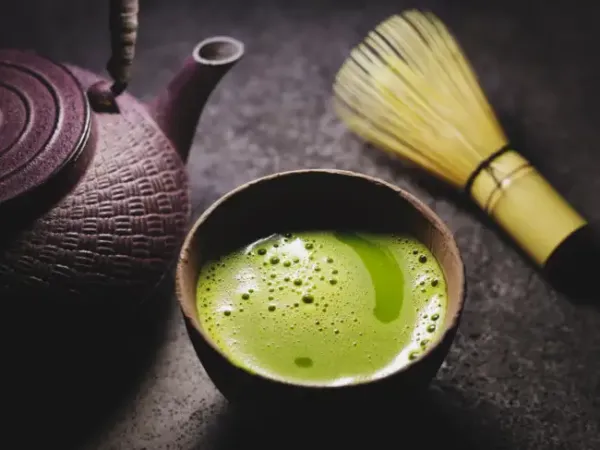Once reserved for the quiet solemnity of Japanese tea ceremonies, matcha has leapt beyond its traditional roots to become a global wellness sensation. From Starbucks frappuccinos to Instagram-worthy lattes, the powdered green tea is now everywhere. But while it may appear to be a modern fad, experts say the matcha boom is firmly grounded in both cultural heritage and science.
A report from the Associated Press highlights how matcha is steeped in centuries-old tradition. Tea masters like Keiko Kaneko still perform the meticulous “way of tea” or sado, where every whisk and gesture symbolizes mindfulness, equality, and respect. Yet outside the serene tea houses, matcha is increasingly being consumed in smoothies, cakes, chocolates, and workout supplements.
One study cited by Healthline found that matcha can deliver up to three times more antioxidants than other types of green tea when dissolved in water. These antioxidants, known as catechins, are powerful compounds linked to lowering the risk of chronic disease, supporting heart health, and protecting the liver.
Matcha’s benefits extend to the body as well. Studies link green tea consumption to better heart health and weight management. Its caffeine and antioxidant content may also help boost endurance, making it popular among fitness enthusiasts looking for a natural energy source.
However, this surge comes with challenges. Aging farmers and labor shortages mean that keeping up with demand is not easy. Meanwhile, lower-grade matcha is often diverted into lattes and desserts, a move that some tea experts lament as a waste of a delicate and complex drink best enjoyed in its purest form.
Still, many believe the global fascination is here to stay. As tea master Kaneko told the AP, the practice of sado is about cherishing each shared moment as “unique and unrepeatable.” And perhaps, that timeless message is part of what makes matcha so alluring in a fast-paced, modern world.
A report from the Associated Press highlights how matcha is steeped in centuries-old tradition. Tea masters like Keiko Kaneko still perform the meticulous “way of tea” or sado, where every whisk and gesture symbolizes mindfulness, equality, and respect. Yet outside the serene tea houses, matcha is increasingly being consumed in smoothies, cakes, chocolates, and workout supplements.
Why Matcha Is Stealing the Spotlight
So what makes this finely ground tea different from ordinary green tea? According to Healthline, the secret lies in how it is grown and processed. Farmers shade the tea plants for weeks before harvest, which boosts chlorophyll and amino acid levels, resulting in a vibrant green powder packed with nutrients. Unlike regular tea leaves, matcha is consumed whole in powdered form, making it richer in antioxidants, amino acids, and caffeine.One study cited by Healthline found that matcha can deliver up to three times more antioxidants than other types of green tea when dissolved in water. These antioxidants, known as catechins, are powerful compounds linked to lowering the risk of chronic disease, supporting heart health, and protecting the liver.
A Natural Brain and Body Booster
Beyond its cultural prestige, science is also fueling the frenzy. Research shared by Healthline suggests matcha may enhance brain performance, improve memory, and sharpen reaction time. Thanks to the combination of caffeine and the calming compound L-theanine, matcha provides alertness without the jittery crash often associated with coffee.Matcha’s benefits extend to the body as well. Studies link green tea consumption to better heart health and weight management. Its caffeine and antioxidant content may also help boost endurance, making it popular among fitness enthusiasts looking for a natural energy source.
A Booming Industry With Growing Pains
Japan’s government is now actively supporting tea growers to switch from sencha (traditional green tea) to matcha production. According to AP reports, the production of tencha—the tea leaves used for matcha—nearly tripled between 2008 and 2023. Exports of Japanese tea have more than doubled in the last decade, with the United States emerging as the biggest consumer market.However, this surge comes with challenges. Aging farmers and labor shortages mean that keeping up with demand is not easy. Meanwhile, lower-grade matcha is often diverted into lattes and desserts, a move that some tea experts lament as a waste of a delicate and complex drink best enjoyed in its purest form.
Tradition Meets Trend
For traditionalists, the matcha craze presents a paradox. On one hand, its popularity has sparked renewed interest in Japanese tea culture, even as participation in tea ceremonies declines. On the other, the commodification of matcha into mass-market drinks risks overshadowing its cultural and spiritual significance.Still, many believe the global fascination is here to stay. As tea master Kaneko told the AP, the practice of sado is about cherishing each shared moment as “unique and unrepeatable.” And perhaps, that timeless message is part of what makes matcha so alluring in a fast-paced, modern world.





